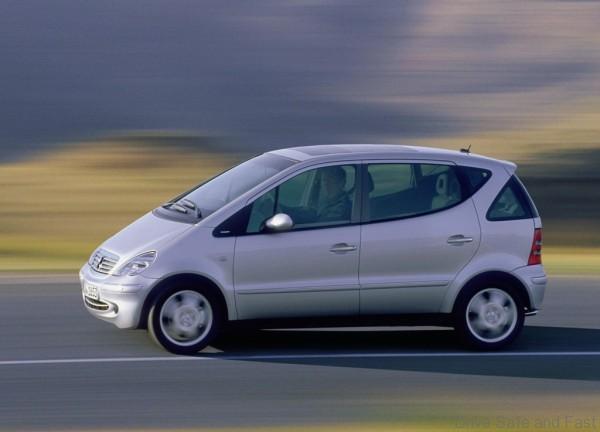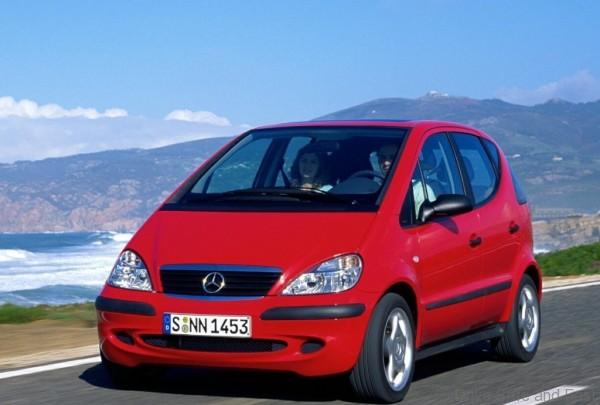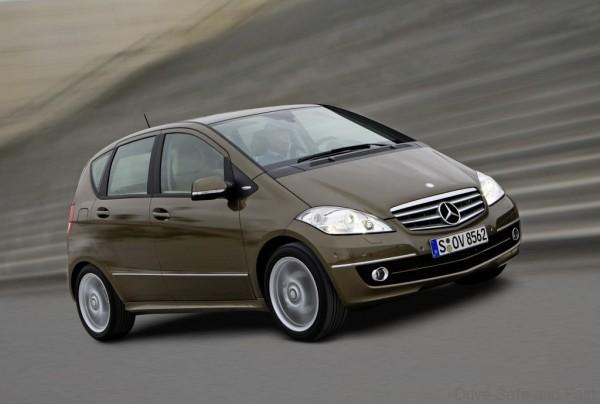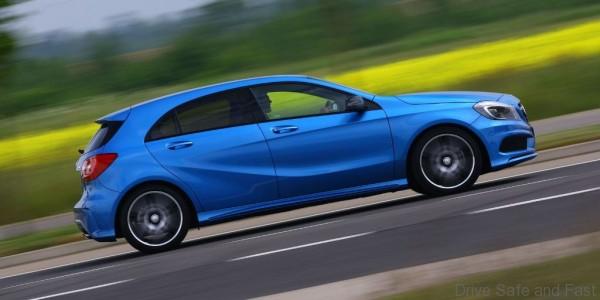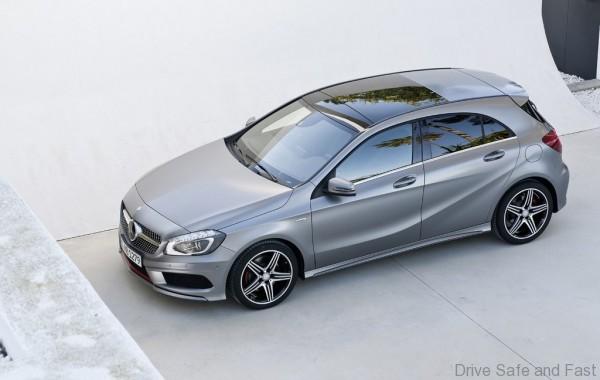Mercedes Benz A-Class, From Family & Functional To Hot & Sexy
The first generation of the A-Class was launched in 1997 where Mercedes Benz engineers created an automobile that appropriately reflected the brand values in the compact vehicle category.
Codenamed the 168 series, this new Mercedes car featured small external dimensions combined with a generous interior.
The most important feature was the bodywork structure, based on the sandwich principle. This meant that the engine, transmission, and other drive system components were arranged under and in front of the passenger compartment. In the event of a frontal impact, the entire drive system unit was intended to slide out beneath the passenger compartment. This provided an extremely high level of safety in a crash, the likes of which had not been seen before in this car category. The A-Class set new standards in its market segment, with ESP®, BAS brake assist system, and other safety systems installed as standard.
In total from 1997 to 2004 more than 1.1 million first-generation A-Class cars were built.
In 2004, the new generation A-Class, codenamed 169 series took over from the first A-Class generation. The model once again features bodywork based on the sandwich principle. In addition to the five-door version, there is now also a three-door A-Class coupe, both with the same wheelbase. The design emphasizes the sporty appearance of the model.
The exciting technology premiered in the model includes the AUTOTRONIC continuously variable automatic transmission, and also a selective damping system that adjusts the shock absorber forces to the driving conditions. The chassis features a parabolic rear axle.
This 169 series A-Class wasn’t so much a evolution of the older 168 series A-Class car as a complete root and branch development. A wider range of engines were offered and three-door models also gave the A-class a more dynamic and aspirational image.
In 2005 global sales were steady with the unveiling of a turbocharged A200T model giving enthusiast drivers some reason to look at the A-class, probably for the first time. In mid-2008, the range was slightly facelifted and slimmed down to the derivatives that buyers really wanted, mainly the smaller engines.
There were now only two petrol options, the A150 with its 1.5-litre 95bhp unit and the A170 with its 1.7-litre lump producing 116bhp. Mercedes introduced a package of eco-friendly ‘BlueEfficiency’ tweaks across the range to rival BMW’s ‘EfficientDynamics’ package. This led to improved fuel consumption figures and lower emissions on all models.
The 3rd and current generation Mercedes A-Class was based on the 2011 Concept A-Class, and was unveiled at the 2012 Geneva Motor Show. Production of this A-Class began at Mercedes-Benz Rastatt plant in 2012.
With the new A-Class and its radical, dynamic design idiom, Mercedes-Benz opened up a totally new chapter in the compact class in 2012, visualising the beating pulse of a new generation of vehicles in fascinating guise. “The A Class was a clear statement on the new dynamism of the Mercedes-Benz brand,” said Dr Dieter Zetsche, CEO of Daimler AG and Head of Mercedes Cars when this A-Class won the coveted titleof most beautiful car in Germany.
The exterior of the new A-Class displayed a particularly distinctive, sporty character which was complemented to perfection by an innovative interior exuding a particularly high-quality feel. “Realising the new dynamic style of Mercedes-Benz in the compact class was a thrilling challenge,” related Gorden Wagener, Head of Design at Mercedes-Benz. “No other car in this segment is as progressive as the A-Class. The sculptural aspect of the A-Class design is typically Mercedes. The feature lines on the sides in particular lend the A-Class structure and a welcome edginess. The new dynamic style is also immediately apparent inside the vehicle.”
Standing as much as 7 inches lower on the street than the previous A-Class model, this 2012 Mercedes A-Class communicates a passion for design at the very first glance. This radical form language, presented and enthusiastically acclaimed around the world with the Concept A-CLASS, was consistently implemented in the series production car. The appearance of the new A-Class reflects this new Mercedes-Benz design strategy. The result is what is known as a two-box design with a distinct character of its own, a sportily emotive exterior and an exceptionally high-quality feel to the interior.
Typical features of the long, sporty front are its pronounced V-shape, the separate headlamps, the radiator grille with central Mercedes star and double slats to either side of the star, as well as the additional air intakes on the sides. The “dropping line” apparent in the side profile dissipates towards the vehicle’s front end. The design of the headlamps, together with the configuration of the light functions within them, is a key element of the design concept.
The light modules and LEDs behind the headlamp cover glass have been arranged in such a way as to create the characteristic “flare effect” for the daytime running lamps and indicators. The so-called “flare” is made up of the feature line within the headlamp, the LED modules for the daytime running lamps and the bulb sets for the indicators. This signature effect gives the car its energetic look and so helps to define a new, youthful face for Mercedes.
The perfect interplay of dynamic design and excellent aerodynamics is nowhere more apparent than in the roof, with its smooth surfaces and taut, arcing curve. The silhouette reveals smooth, flowing lines finishing in a flat edge. The roof spoiler, which conveniently hides all the aerials, provides an extra sporty touch and gives structure to the roof assembly. The beltline rises to the rear to form a pronounced wedge-shape. The side view is distinguished by sensuously moulded sculptural side panels and crisp lines. The front structural edge, above the wing, falls in what is known as a “dropping line” in a gentle arc towards the rear. The powerfully-shaped shoulder muscles above the rear axle serve to emphasise the car’s coupé-like character. A further line sweeps up from just in front of the rear wheel arch, then gently fades away. All these lines give depth and dynamism to the car’s profile. Dynamic side sill panels provide a final finishing touch towards the bottom of the car, enhancing the appearance of elegant light-footedness.
The broad emphasis of the tail end is revealed in an interplay of convex-concave surfaces and edges. The tail lights continue the line of the muscular shoulders back towards the rear, while their horizontal orientation emphasises the car’s powerful breadth. The light functions are provided by fibre-optic cables and LED modules. Here, too, the interaction between design and aerodynamics is very clear: the surface finish of the tail lights is not only an interesting design feature, but also improves the airflow around the vehicle thanks to defined airflow break-away edges in the rear section.



